|

On eBay Now...
WWII RARE Jungle Mosquito TENT \"Insect Field Bar 1943\" USMC Army UNISSUED NOS For Sale
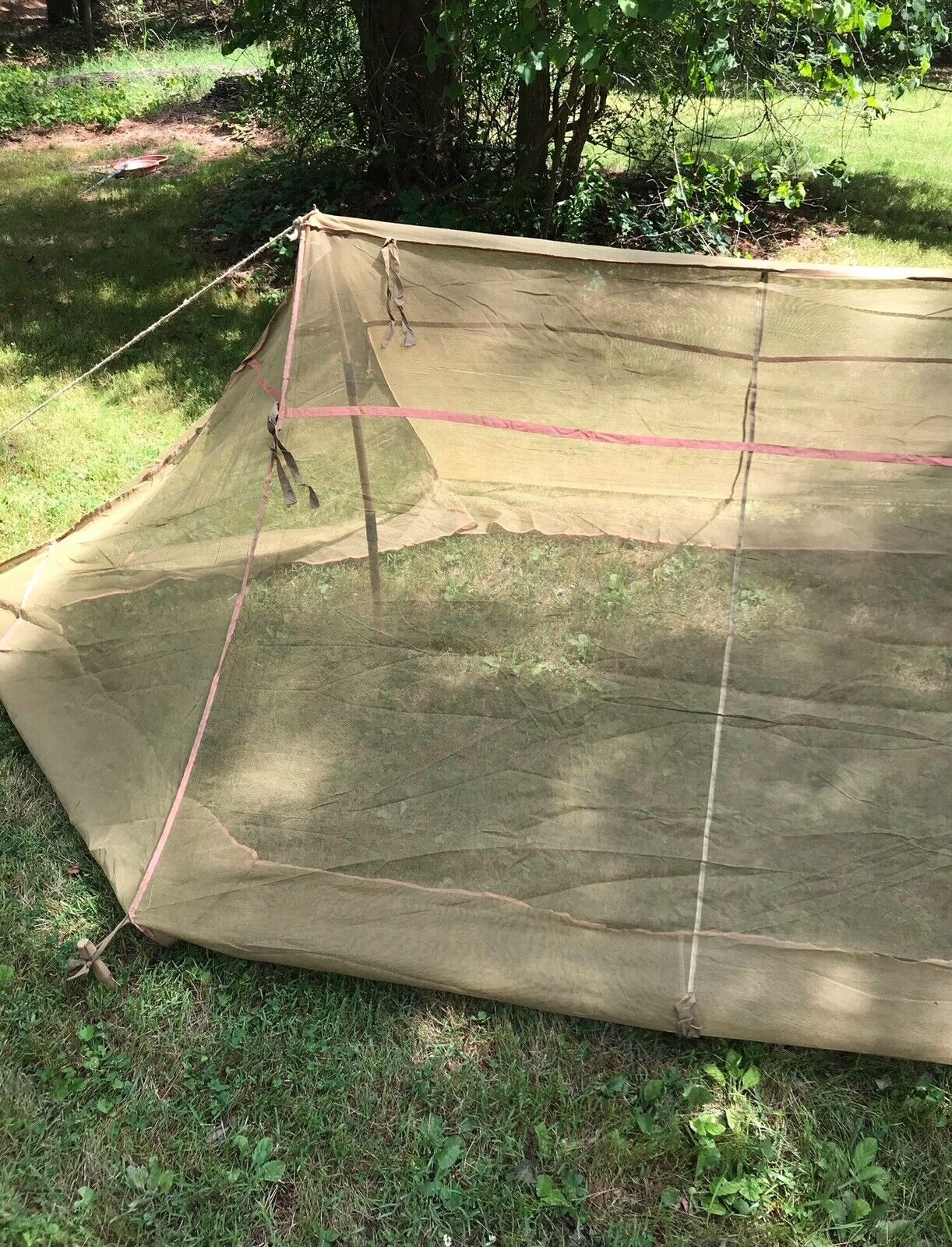
When you click on links to various merchants on this site and make a purchase, this can result in this site earning a commission. Affiliate programs and affiliations include, but are not limited to, the eBay Partner Network.

WWII RARE Jungle Mosquito TENT \"Insect Field Bar 1943\" USMC Army UNISSUED NOS:
$125.00
WWII RARE Jungle Mosquito TENT \"Insect Field Bar 1943\" USMC Army UNISSUED NOS!
+ This is a museum-grade example!+ This is very practical, lightweight mosquito/insect TENT which when erected was virtually identical to two double-ended \"Shelter Halves\" buttoned together! It is of Light Shade OD#3 cotton \'marquisette\' ...not nylon as are modern iterations of this \'tent.\'+ The perfectly intact Contract Tag of starched fabric, stitched into the seam reads:Bar, Insect, Field
Mildew ResistantCAMEO CURTAINS, Inc.Cont. W669 qm-30598Dated June 22, 1943Spec. P.Q.D. No. 263Stock No. 27-B-345Phila. Q.M. DepotInspector+ This INSECT FIELD BAR is an actual tent and is NOT to be confused with the commonly encountered rectangular BAR for the Cot. (The descriptor \'FIELD\' in the title, indicates that this Bar is the tent model.) Nor is it to be confused with the current NYLON BARS made today. The netting is the same \'marquisette\' material, manufactured by Pepperell Mills that the QMC specified for the various Mosquito Headnets.
+ DIMENSIONS: Laid flat, the Length, from pointed end to end is 16 feet. Without the two pointed ends, the Length is 6 feet. Laid flat the Width, from the \'ridge line\' to the bottom hem of the \'apron\' is 5 feet, 4 inches.+ Along the reinforced seams are 14 pairs of 12\" lightweight HBT Tape TIES, 3/4\" in width and 10-1/2\" in length.+ The condition is UNISSUED \"New Old Stock\" the lightweight marquisette netting is still stiff with sizing from the Cameo Curtains, Inc. factory! There is one minor seam separation, an inconsequential factory blemish that appears to be original to the factory seamstress. Other than that this RARE piece of equipment, valued in the Pacific, Mediterranean, European and China/Burma Theaters...is \'Stone Cold\' Mint.
+ This was to be erected with two of the Shelter Half Poles (either the folding type, or the sectional type) at the REINFORCED CORNERS of the Bar and a minimum of 8 Tent Pins/Pegs. Or it could be strung between two trees, by fastening he HBT tapes along the top \'ridge line\' seam to a rope or cord spanning he two fixed points.
+ It it double-ended, similar to the second or \"New Type\" Shelter Halves, introduced in 1943.
+ An 12\" APRON around the bottom hem prevented insects from entering under the sides.+ There is no sewn entrance. Entry is made be crawling under the hem after erected.+ All of the seams are reinforced with a salmon-colored bias Tape.+ NOTE: This mint Tent (Insect Field Bar) has never been erected, only unfolded for these photographs The two photos of the erected Tent were taken of ANOTHER Tent of mine to illustrate what it looks look when pitched.
***** from the NationalMuseum of the U.S. Army, The Other Foe: The U.S. Army’sFight against Malaria in the Pacific Theater, 1942-45by Seth Paltzer
Disease has always had a major impact on armies atwar, often producing more casualties than combat wounds. Thehistory of the U.S. Army is full of examples of this fact. TheCivil War Trust estimates that for every three men killed in combatfrom 1861 to 1865, another five died of disease. By thetwentieth century, medical care and preventative measures had beengreatly improved, but these advances were often difficult toimplement on the front lines, and disease continued to exert animmense force in war, especially in the remote islands of the SouthPacific during World War II.The average soldier serving inthe Pacific Theater of Operations (PTO) fighting against the Japanesefaced a great many challenges and dangers. Often overlooked byhistories of the war, one of the most insidious of these was malaria.This disease, while not typically fatal to the infected soldier,would take him out of action for a prolonged period just as surely asif he had been wounded in battle. The Army’s fight againstmalaria is a fascinating story of man versus nature, with America’ssuccess in the war against Japan at stake. Malaria is a tenacious disease that can havelong-lasting effects on the infected person. American soldiersencountered two different types of the disease in the PTO: benign,which causes violent chills, fever, and weakness, and malignant, aform much more likely to cause death. Both types had thepotential to turn a battle-ready soldier into a bedridden hospitalcase in a very short period of time. The disease itself is caused by a mosquito-borneparasitic protozoan that attacks the red blood cells and liver of theinfected person.The damp, swampy environments encountered onmany Pacific islands were ideal breeding grounds for the Anophelinemosquitoes that transmit the disease. Furthermore, the manyshell craters, foxholes, and ruts created during combat operationsall served to collect water, offering plentiful opportunities for theinsects to breed and multiply. When the mosquitoes feed on aninfected person, they become carriers of the parasite, and thendeposit the disease in the bloodstream of another person when theyfed again. In this way, the instances of infection couldquickly balloon, as each new person infected became a carrier throughwhich more mosquitoes could pick up the disease, and in turn, infectadditional victims, establishing a vicious cycle that proved verydifficult for the Army to disrupt. With the supply of quinine all but cut off with theJapanese capture of the Dutch East Indies, the Allies were forced tofind alternative antimalarial drugs. The most commonly used drug tocombat malaria was quinacrine, better known by the brand nameAtabrine. While effective, Atabrine had several side effects,including a tendency to turn a soldier’s skin bright yellow.(Military Transport Association) The ease with which the disease spread was not theonly problem the Army faced. Soldiers in combat were often moreconcerned with fighting, marching, and finding their next meal orplace to bunk down than they were with using proper mosquitorepellant and sticking to strict antimalarial pill regimens. Inthe Philippines, James Gillespie of the U.S. Army Medical Departmentnoted in his official history that, as troops retreated in the faceof the Japanese assault in 1941, large amounts of medical supplieswere abandoned in hasty withdrawals. He also noted thatindividual soldiers often dumped their antimalarial pills since theythought of them only as a “useless inconvenience.” As a result, the disease became a huge problem,waylaying thousands of soldiers and support personnel.According to the U.S. Army Heritage and Education Center, the Allieddefenders of the Philippines were devastated by an epidemic ofmalaria. About 24,000 of the 75,000 American and Filipinosoldiers involved in the desperate campaign to stop the Japaneseadvance in 1942 were suffering from malaria. If these troopshad been healthy, they could have greatly bolstered the defenseagainst the 57,000 Japanese invaders early in the war. The lessonlearned by the Army from the Philippines was that effective malariacontrol was essential for the successful conclusion of the campaignin the Pacific. The year 1942 proved to be an absolute low point forthe Army in its efforts to prevent malaria from ravaging troopsdeployed to the Pacific. Infection rates were high across theentire Southwest Pacific Area (SPA), and in some localized hotspots,astronomically so. One of the hardest hit areas was the Alliedbase at Milne Bay, Papua, which provided support for the campaignagainst Buna and Gona in late 1942 through January 1943. Duringthe campaign, malaria was rampant. According to the U.S. ArmyCenter of Military History, incidence of the disease reached anastounding 4,000 cases per 1,000 soldiers per annum.Essentially, this was the equivalent of every single soldier at Miln coming down with the disease at least four times throughout thecourse of the year. This had a devastating effect on theefficiency of the units based there, where it was estimated that theylost around 12,000 man-days a month in work due to the disease.Infection rates for the rest of the area of operations were notmuch better. According to tabulations done after the war, Armymedical personnel treated 47,663 cases of malaria in the SPA in1942. The rate of infection was calculated at almost 251 casesper 1,000 troops in the entire area. With a quarter of alltroops infected, malaria was proving to be as large a menace toAmerican operations as the Japanese. Additionally, it wasdiscovered during the fighting at Buna that efforts to reduce theincidence of the disease quickly broke down once combat operationsbegan. The Medical Department estimated that casualties due tothis disease for this period outnumbered combat casualties on anorder of seven to ten times. Lieutenant General Robert L.Eichelberger, commander of the U.S. forces bogged down at Buna, notedthat “disease was a surer and more deadly peril to us than enemymarksmanship. We had to whip the Japanese before the malarialmosquito whipped us.” The high rate of preventable losses ofmanpower and work-days seen in Papua were simply untenable if theUnited States and her allies were to take the initiative and defeatJapan’s armies in the Pacific. The first major step the Army took to turn the tideagainst malaria occurred in early 1943. In April of that year,Colonel Howard F. Smith, Medical Corps, was appointed theatermalariologist. In this newly created position, he led theArmy’s efforts to research and combat the illness throughout thePTO. Along with the Combined Advisory Committee on TropicalMedicine, Hygiene, and Sanitation, created by General DouglasMacArthur, Smith tackled the monumental task of creating andimplementing the policies needed to stem the tide of malaria. Army medical officers soon realized that the Armyneeded a two-pronged approach to attack malaria. First, theyneeded to ensure that the Army forces were properly supplied with thenecessary antimalarial medicines and anti-mosquito devices needed toprevent the onset of the disease. Second, they had to conduct awide-ranging information campaign to educate soldiers in combat zonesabout the importance of using the supplied medicine and otherprotective measures. However, many challenges still lay aheadin the fight against malaria. ...Atabrine was not the only tool the Army used tofight the spread of malaria in the Pacific. The fact that noone could ensure that all troops would take the medicationconsistently meant that additional measures needed to be taken toreduce the risk of infection as much as possible. One of themost important and effective tools the Army had against malaria wasthe insecticide dichloro-diphenyl-trichloroethane, more commonlyknown as DDT. ... The fight against malaria was an ongoing struggle inthe Pacific, and the disease affected both sides. By the war’send, the increasingly cut-off Japanese were suffering extreme ratesof infection. It was estimated that at times, up to ninetypercent of Japanese troops in some locations were combat ineffectivedue to malaria and dysentery. At Buna, where American forceshad learned hard lessons about the impact the disease could have, theJapanese fared just as poorly. After the battle, the 3dPortable Surgical Hospital records noted that every single Japaneseprisoner they received was infected with malaria. Meanwhile,the U.S. Army had put together a largely effective campaign toprotect its soldiers from malaria. It was impossible to completely stop the spread ofmalaria, and in the end, somewhere between sixty to sixty-fivepercent of American troops in the South Pacific reported contractingthe disease at some point. However, when DDT was combined withthe effective use of Atabrine and other measures against mosquitoes,it was found that malaria rates could be reduced up to seventypercent from what had been seen in the early stages of the war.Thanks to the educational efforts of the Army’s propaganda, and thescientific and industrial base that supplied insecticides andantimalarials, the Army was able to significantly minimize theeffects of malaria on the war effort, contributing in no smallmeasure to final victory.
*****
From LIFE, (November 30, 1942) OUR FIRST JOB NOW IS TO DISAPPOINT SOME INSECTS The legendary horse-shoe-nail that lost a battle seemed prettyfar-fetched until a mosquito called Aedes aegypti began layingwhole armies low. Today the anti-disease equipment of our forces inthe tropics is a major safeguard of their active fighting power.Pepperell marquisette isn\'t nearly so plentiful for yourwindow curtains these days -- because U.S. soldiers hacking their waythrough jungles need more of it for there head-nets. They\'ll get allwe can make of of every fabric our 98 years of \"know-how\"has taught us to produce. When that\'s done you\'ll get your curtains-- not before. Our Pepperell people are unanimous on thatpoint -- and we\'re sure you stand with them...against Aedes aegypti, dictators , and all other venomous insects. Victory is Everybody\'s Business PEPPERELL MANUFACTURING COMPANY State Street, Boston, Massachusetts

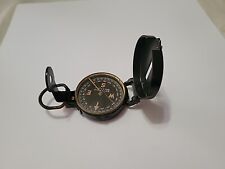
U.S. WW2 All Original Rare Black Lensatic Compass By W.L.E. Gurley. Troy N.Y. $69.99
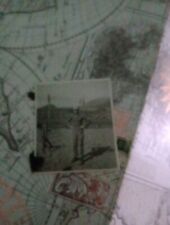
WW2 WWII original USA photo ● RARE PHOTO JAPANESE POW CAPTURED ● $100.00
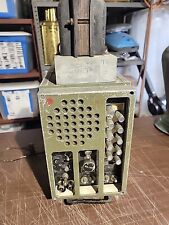
RARE WESTERN ELECTRIC WWII ARMY SIGNAL CORPS FIELD TANK RADIO RECEIVER BC-603-D $125.00
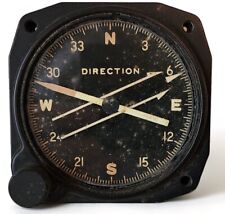
ORIGINAL WWII 1944 US Air Force Aircraft Gauge Indicator Magnetic Compass RARE $225.00
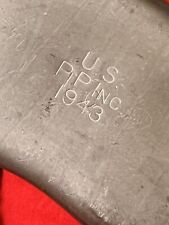
WWII "Poloron Products, Inc. 1943" CANTEEN. Very RARE maker RARE "I.C." stamp $115.00
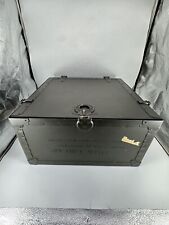
Vintage US Army WWII Field Desk NSN 7110-00-300-5298 Chest Box RARE $179.99
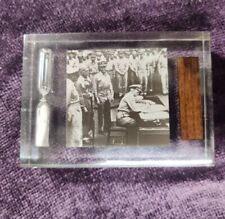
RARE WW2 Surrender Paperweight with Teak From Surrender Deck, USS Missouri... $349.99
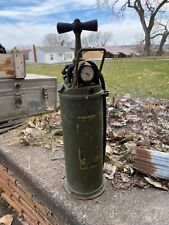
RARE ORIGINAL WWII US ARMY HAND PUMP HALFTRACK, TANK, JEEP WATER EXTINGUISHER $159.96
|